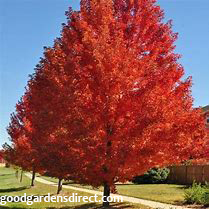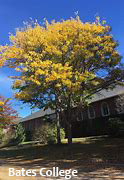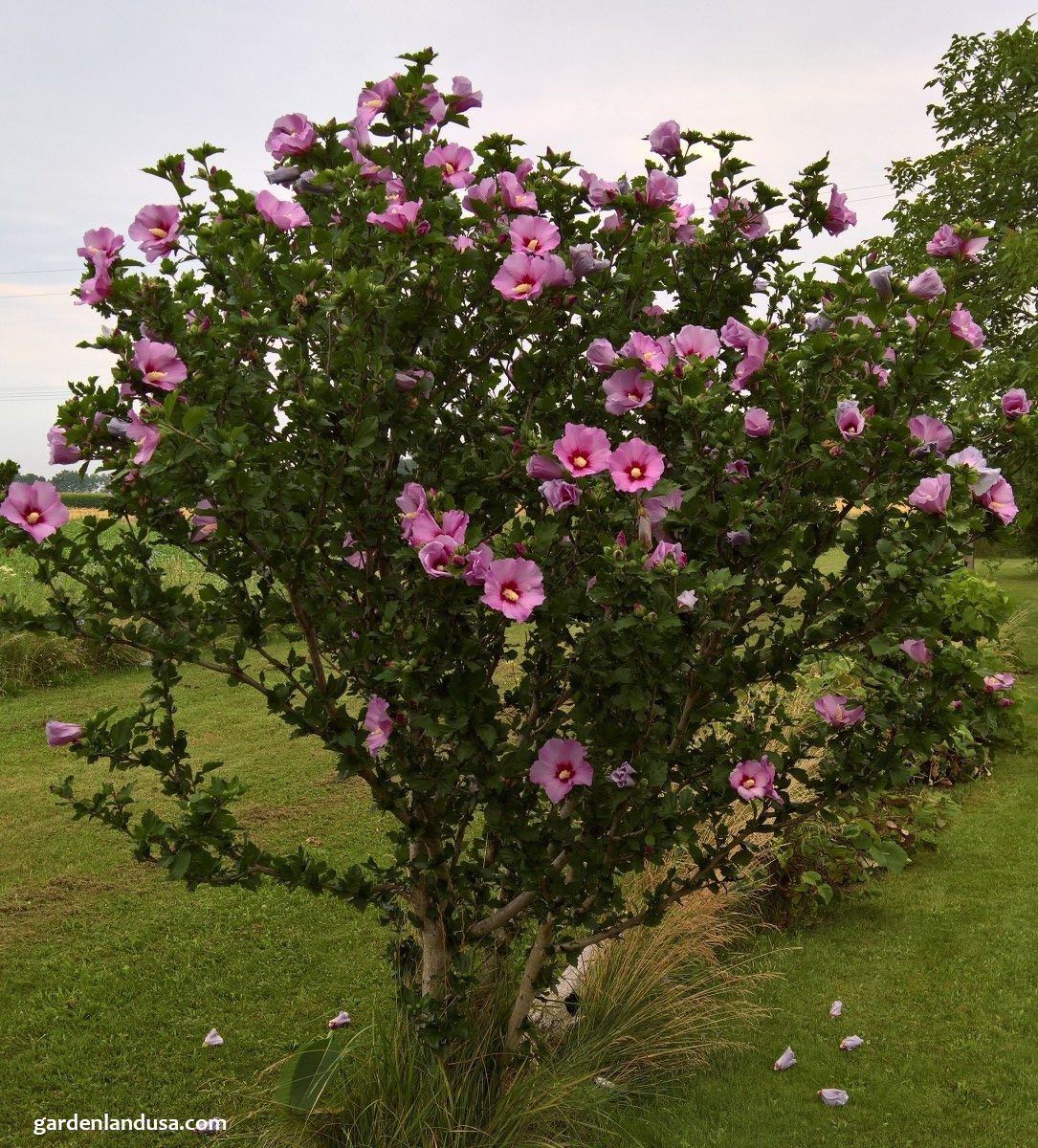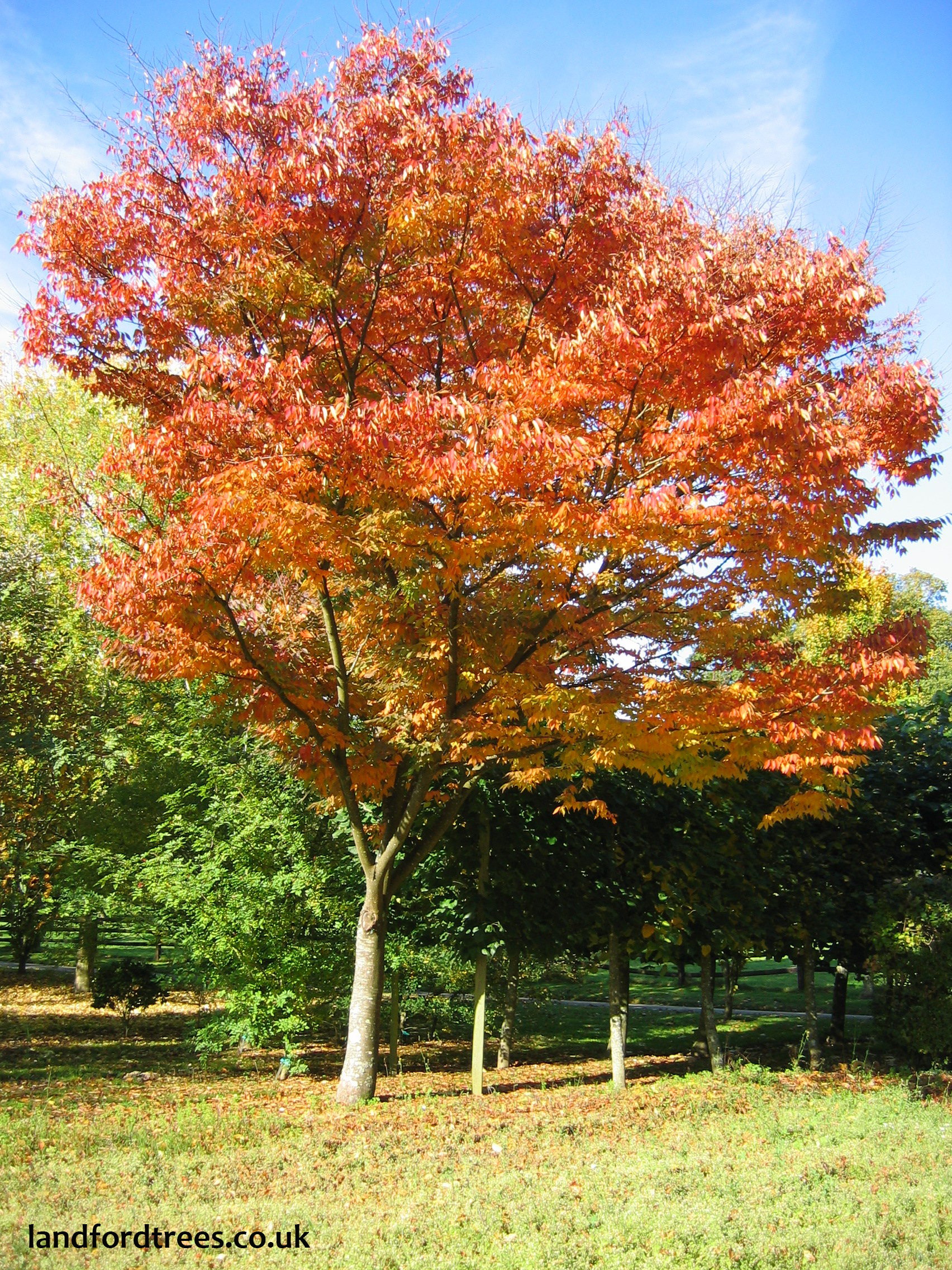Autumn is the best time of year to plant trees—as long as they are planted early enough to allow the roots to establish themselves before winter. However, even more important than when you plant is the type of trees you choose to plant. Trees that are overplanted in neighborhoods start to develop diseases and pest problems, so make sure you choose your trees wisely if you want them to last! Read on for a list of trees that our ISA-certified arborists do and do not recommend for planting in Utah yards.
Ash Trees (Green Ash)


- Pretty summer and fall foliage
- Susceptible to the emerald ash borer and lilac borer
- Susceptible to fungal diseases
- Overplanted in some parts of Utah
Ash trees (especially the green ash variety), while very beautiful, are susceptible to major insect infestations from the emerald ash borer, a devastating pest that has already destroyed thousands of ash trees across the United States. As ash trees are also vulnerable to lilac borer infestations and diseases, they are not recommended for planting. Additionally, ash trees have been over-planted in many parts of Utah and would likely not survive a borer attack or subsequent fungal infections.
Aspens


- Great at high elevations
- Beautiful bark and foliage
- Susceptible to disease and insects
- Send out sucker sprouts
Aspens may be Utah’s new state tree, but they are one of the worst trees you can plant in your home landscape if you live in the valleys. While aspens thrive at their natural elevation (above 6500 ft.), they suffer from a long list of diseases and insect infestations when planted below their usual elevation.
The hot, dry conditions of valleys along the Wasatch Front put too much stress on aspens, leaving them vulnerable to a host of problems: leaf scorch, leaf spot, iron chlorosis, borer insects, cankers, galls, and more. If that wasn’t enough to convince you, they also send out runner roots to propagate themselves, which can cause problems for homeowners who choose to plant them around their homes.
If you live above 6,500 ft elevation, it’ll be easier to enjoy the beauty of aspen trees in your home landscape without constantly combating disease and insect attacks. However, you’ll still have to deal with runner roots, and you may end up with hundreds more aspen trees than you signed up for. With that said, if you live at a high elevation and choose to plant aspen trees, the beautiful bark, lovely green summer foliage, and golden fall foliage will likely be worth it.
Autumn Blaze, Autumn Fantasy, Freeman Maple, Silver Maple


- Lovely fall foliage
- Weak-wooded
- Prone to iron chlorosis
- Upkeep is expensive
As one of the most popular tree types planted in Utah, maples are well-known for their foliage and wood. Silver maples and autumn blaze/autumn fantasy varieties of the freeman maple are susceptible to iron chlorosis and struggle in Utah’s hot, dry climate. These varieties of maple also have fairly weak wood that makes it difficult to keep them free from diseases and insect infestations.
People usually plant these types of maples because of their lovely fall colors, but our arborists agree that the number of problems these maples present far outweigh the advantages of their foliage. These types of maples are prone to severe iron chlorosis because of Utah’s alkaline soil composition. Iron chlorosis is expensive to treat, and treatments will likely be required every year just to keep the tree alive. If the tree suffers from diseases or insect infestations in addition to iron chlorosis, chances are it will die quickly. For these reasons, our ISA-certified arborists do not recommend planting these types of maple trees.
Elms (Chinese Elm, Siberian Elm)


- Provide good shade
- Overplanted in Utah
- Spread quickly
- May cause damage to residential areas
Some of the worst trees for planting in Utah are elm tree varieties, especially Chinese (Siberian) elm trees. Our arborists do not recommend planting these trees because they have weak wood, which makes them extremely susceptible to a range of insect infestations and diseases (like scale and leaf miner disease). They also send out thousands of seeds that will take root and cause problems in your yard.
Elm trees grow quickly and provide good shade, so they have been overplanted in many Utah neighborhoods. This causes problems in residential areas where they grow too large and interfere with powerlines, sidewalks, and roads. If you’re looking for a nice shade tree, try a different type of tree before considering an elm.
Evergreens


- Thrive in high elevations
- Drop needles throughout the year
- Require large amounts of water
- Susceptible to borer insects
Many evergreen trees are native to Utah’s higher elevations and can be a beautiful addition to a yard. However, they rarely receive the amount of water they need to flourish at lower elevations. Evergreen trees need double or triple the amount of water they would naturally receive at a lower elevation. For this reason, our arborists usually don’t recommend that people plant any type of evergreen in their home landscape.
Most people don’t realize how much water evergreens need and either won’t water their trees at all or won’t water them enough. This weakens the tree, leaving it susceptible to attacks from borer insects. A rough way to determine the amount of water your evergreen tree needs weekly is to measure the diameter of the tree and to give about 5–10 gallons of water for every inch of trunk.
Flowering Pear (Callery, Bradford Pear)


- Pretty spring blossoms
- Weak-wooded
- Produce an unpleasant smell
- Overplanted in Utah
Flowering pear trees look beautiful when they bloom in the spring and when the leaves change in the fall. Although this tree looks lovely, its flowers emit a foul-smelling odor, and the bark/branch structure is weak. This makes it susceptible to fire blight (a nasty, limb-destroying fungus), frost damage, and other abiotic issues.
Additionally, this tree grows quickly and can reach up to 50 feet tall, which is larger than most people expect when they choose to plant it. For these reasons and because Bradford pear trees are widely overplanted, they are not recommended by our arborists.
Honey Locust


- Lovely fall foliage
- Send out sucker sprouts
- Susceptible to insect attacks
- Weak-wooded
The honey locust tree may look beautiful, but it is considered an invasive tree because it sends out sucker sprouts. Some varieties of honey locust trees have thorny branches and struggle with aggressive insects that bore into the trunk and main branches of the tree. The chances of saving your honey locust tree from a borer attack are slim, especially if it has been weakened by other environmental factors. Honey locust trees are usually planted for their nice fall color and attractive foliage, but the risks they invariably carry with them should cause you to think twice about planting one in your landscape.
Poplar


- Provide good shade
- Send out suckers and seeds
- Susceptible to diseases and insects
- Require plenty of space to grow
Stay away from poplar varieties as they are weak-wooded and particularly susceptible to attacks from diseases and insects.
Depending on the specific cultivar, poplars will also send out hundreds of sucker sprouts or seeds to propagate themselves, which is an annoyance for homeowners who choose to plant them.
These types of trees also grow very large, making them unsuitable for small yards. If the right variety is planted in a wide-open area like a park and properly cared for, it can be a fairly nice shade tree. Even so, our arborists recommend staying away from poplar trees because they are not worth the hassle.
Sycamore


- Provide good shade
- Lose branches every year
- May cause damage to residential areas
- Susceptible to insects and diseases
Because sycamore trees grow tall quickly, they have been overplanted as shade trees in the past. In recent years, they have become a nuisance tree and are planted less often. Sycamore trees are not recommended because they are susceptible to insect infestations and diseases. Sycamore plant bug, scale, and anthracnose are some of the most prevalent problems that these trees present. They also experience a fair bit of die-back, which creates a mess of dead twigs and branches every year. If that isn’t enough, sycamores are also known for disrupting concrete with their surface roots. As these problems are so widespread, our arborists suggest that homeowners refrain from planting sycamore trees.
Willow


- Attractive branch structure
- Weak-wooded
- Require lots of water
- Lose large numbers of branches and twigs
The iconic, delicate structure and shape of willow trees have made them popular in the past. However, they suffer from a range of problems that make them difficult to care for in Utah.
Like sycamore trees, willow trees often shed branches and twigs that die off. They also have weak bark that makes them vulnerable to diseases and insects, especially borers. Additionally, willows need a lot of water—more than what they would usually receive in our Utah climate. All of these factors create an undesirable tree that our arborists do not recommend.
Beech


- Provides good shade
- Nice shape and foliage
- Requires space to grow
- May struggle with aphids
Beech trees make great shade trees in large, open areas.
If you’re looking for a sturdy, attractive shade tree that will last for years, consider planting a beech tree. Just be sure to plant your tree in an area where it has plenty of room to grow—some types of beech trees can reach up to 100 feet tall!
The downside to beech trees is that they struggle with aphids most years. Aphids are generally only a threat to the foliage of the tree and don’t cause lasting damage. However, if they become a problem on your beech trees, Stewart’s tree spraying service can help.
Chokecherry


- Attractive summer foliage
- Fruit-bearing (barren varieties also exist)
- Can thrive in poor soils
- May send out sucker sprouts
Chokecherries are medium-sized trees often planted for their deep purple foliage.
Chokecherry trees have very pretty foliage, and some varieties produce fruits that can be used in jams and jellies. If the small fruits produced by this type of tree bother you, you can also try planting the barren varieties. Chokecherry trees make a pleasant addition to almost any home landscape with their pretty white blossoms in the spring and red-leafed foliage throughout the summer. Although they prefer rich soils, they can survive quite well in poor soils.
The downside to chokecherry trees is that they send out sucker sprouts and may be prone to black knot disease, which affects the bark. Black knot disease is preventable if you can keep the tree bark relatively dry. If your tree still becomes infected, you can prevent the disease from spreading by pruning the affected areas in late winter.
Columnar Oak


- Very strong bark
- Resistant to damaging pests
- Drought tolerant
- Some varieties have pretty fall foliage
Columnar oaks make a good sound/privacy barrier when planted around the perimeter of a landscape.
Columnar oak trees grow tall and can provide an effective privacy barrier and some shade. However, they are not generally planted to be shade trees. Because they have strong bark and are fairly pest resistant, oak trees are a great choice for Utah landscapes. The crimson spire variety of columnar oak is particularly desirable because of its vibrant red foliage in the fall. It is also drought-resistant and grows well in clay soils.
Hackberry


- Beautiful fall foliage
- Drought tolerant
- Tolerant of alkaline soil conditions
- May struggle with aphids or scale
Hackberries are usually planted for their shade and lovely fall foliage.
With its attractive bark and fall foliage, hackberry is a great option for planting in Utah landscapes because it has not been overplanted. It is also very tolerant of drought conditions, alkaline soil, and wind.
This type of tree can grow quite tall, so it’s a good choice if you want a relatively low-maintenance shade tree in your landscape. Hackberry trees bear a small amount of fruit that would normally be a nuisance. However, the fruit rarely makes it to the ground because it dries out or birds eat it before it can fall.
Hackberry trees are quite resilient and usually free from disease and pest infestations. Sometimes aphids and scale choose to attack, but these pests are so small that little damage is actually done.
Hibiscus (Rose of Sharon)


- Beautiful flowers and foliage
- Tolerant of drought
- Not overplanted in Utah
- Susceptible to leaf spot and Japanese beetles
Hibiscus is a small, shrub-like tree that nicely accents garden areas with its attractive summer/fall flowers.
If you’re hoping to add some tropical-looking flowers to your home’s landscape, consider planting a hibiscus (rose of Sharon) tree. Rose of Sharon has beautiful summer/fall flowers (blue, pink, or white) and a shrubby shape that makes it a great border for a garden. Our arborists recommend this tree because it is seldom planted in Utah, which makes it less likely to encounter problems it would normally struggle with.
Hibiscus is not native to Utah and thrives best in nutrient-rich, moist soils, but it is very tolerant of drought conditions and poor soil. It may be attacked by leaf spot diseases, canker, and Japanese beetles, so watch for signs of weakening foliage. Rose of Sharon is worth the slight risk of disease for its reliably beautiful blossoms and foliage.
Hot Wings Maple (Tatarian)


- Attractive spring flowers and fall foliage
- Resistant to iron chlorosis
- Drought resistant
- Disease and insect resistant
Hot wings maples are often planted for their small size, spring flowers, and fall foliage.
Unlike many maple varieties, the hot wings (or tatarian) maple does very well in Utah’s alkaline soil and drought-prone climate. It’s a small, easy-to-manage tree with pretty white flowers, vibrant red seed pods, and pleasant fall foliage.
This type of maple is not seen in Utah very often, so it isn’t known to struggle with diseases or insect infestations. If you want a hearty, unique maple tree that won’t struggle with iron chlorosis, the hot wings maple is a great choice.
Japanese Cherry Blossom


- Beautiful spring blossoms
- Attractive fall foliage
- Accent smaller landscapes well
- Prone to black knot disease
Japanese cherry blossom trees are planted for their spring blossoms, fall foliage, and medium size.
Renowned around the world for their beauty, thousands of Japanese cherry blossom trees were gifted to the US by the mayor of Tokyo in 1912 and planted around Washington DC. They have been a famous attraction there for over 100 years. Japanese cherry blossom trees also make a beautiful addition to home landscapes. They are covered in lovely pink blossoms in spring and have attractive bark and fall foliage. Additionally, the medium size of cherry blossom trees allows them to easily fit into smaller landscapes and gardens.
Though very beautiful throughout the year, Japanese cherry blossom trees are somewhat disease-prone, so be prepared to combat diseases like black knot fungus if you choose to plant these trees in your yard. You can prevent fungal infections from spreading by promptly pruning off branches that show signs of disease and by keeping the branches dry.
Linden


- Drought tolerant
- Nice shape and fall foliage
- Some varieties send out suckers
- May struggle with aphids
Lindens are good shade trees with attractive foliage.
Usually planted because they grow tall and provide good shade, linden trees also show off either flowers, lovely summer/fall foliage, or small fruit throughout the year. They prefer healthy soils and plenty of water, but they are tolerant of dry climates and alkaline soil (which is usually the case in Utah).
One of the only downsides to linden trees is that they often struggle with aphids, which in turn attract wasps. Some varieties also send out sucker sprouts, which can become an annoyance.
Magnolia (Saucer and Star)


- Disease resistant
- Beautiful spring blossoms
- Small size
- Freezing temperatures weaken blossoms
Magnolia trees can fit into smaller areas and are planted for their spring blooms.
Magnolia trees are usually planted for their giant, pink blossoms. They are fairly small (depending on the type), tolerant of alkaline soils, and some varieties are disease resistant.
Blossoms are fragile and can be damaged by late spring frosts, so it may be a good idea to plant your magnolia tree near your home to help protect it. Be cautious with the exact placement, however, because magnolias are less drought tolerant than other trees, prefer milder temperatures, and won’t like to be too hot or dry in the middle of the summer. If you place your magnolia tree in the right part of your yard, you can be confident that your tree will thrive for many years
Scarlet Regal Petticoat Maple


- Unique foliage and nice fall colors
- Thrives in Utah’s alkaline soils
- Drought tolerant
- Resistant to diseases and insects
Scarlet regal petticoat maples are planted for their beautiful summer and fall foliage.
If you’re looking for something new and different for your property, consider planting a scarlet regal petticoat maple. This type of maple is unique because a range of colors exists on the same tree. Petticoat maples are not only known for their unique fall coloring and beautiful foliage throughout the year, but they’re also known for their resilience. Where other maples struggle with iron chlorosis in Utah’s alkaline soils, this tree thrives. It is also tolerant of drought and resistant to insect or disease-related problems. Most people plant this type of maple for its heartiness, and they are rewarded with a strong tree that beautifies their landscape for years.
Zelkova


- Disease resistant
- Medium size
- Drought tolerant
- Beautiful fall foliage
Zelkova trees are attractive, medium-sized shade trees with beautiful fall foliage.
Native to Japan and other parts of Asia, zelkova trees are well-adapted to city conditions and are known for their disease resistance. Zelkovas are medium-sized trees with a vase-like branch structure that provides a fair amount of shade for their size. They are also drought-tolerant and do well in alkaline soils. These attributes are important, but their vibrant fall color is one of the main reasons people choose to plant zelkova trees.
If you have questions about your trees, call or text our office at 801-226-2261 to talk with one of our ISA-certified arborists today. Get a free quote for our tree fertilization service, tree insect control, or tree disease treatments today!



